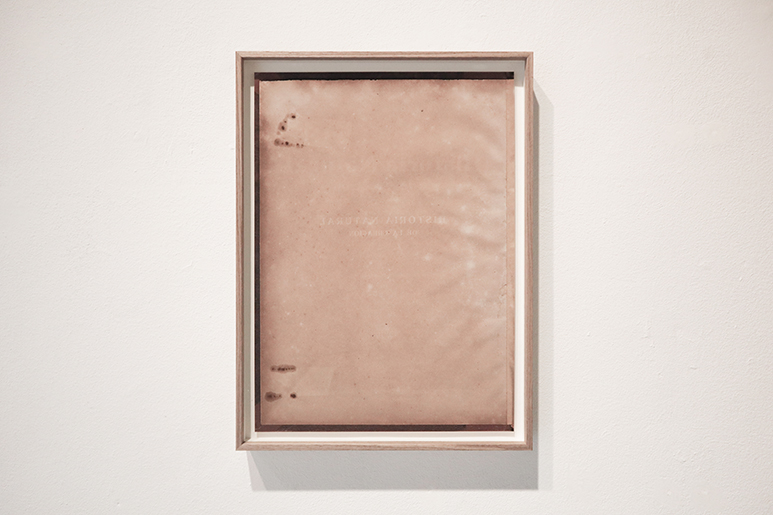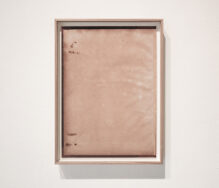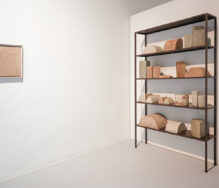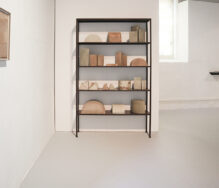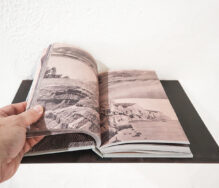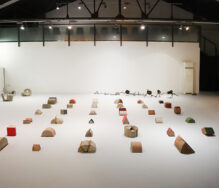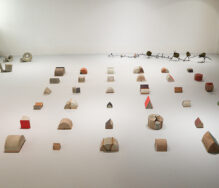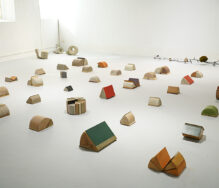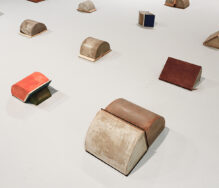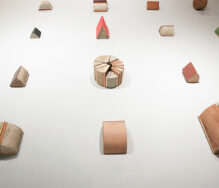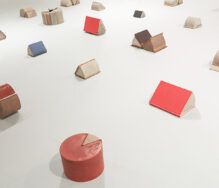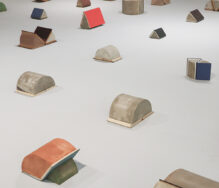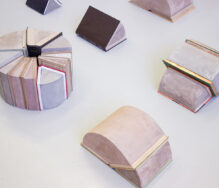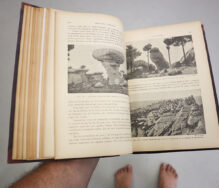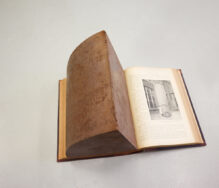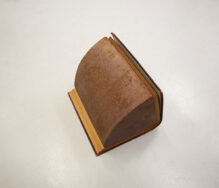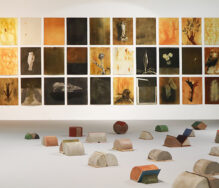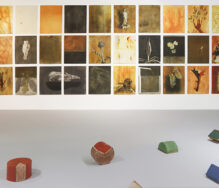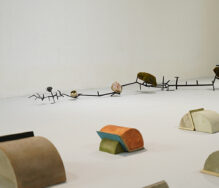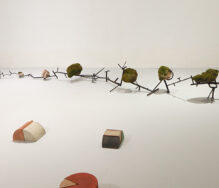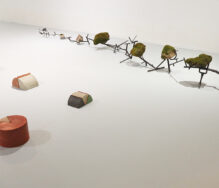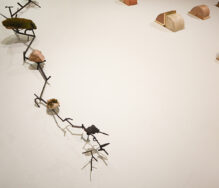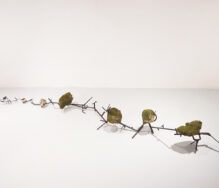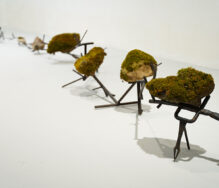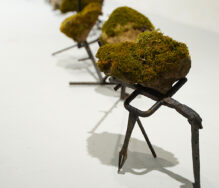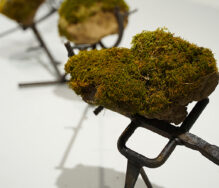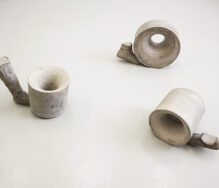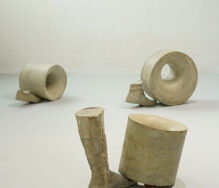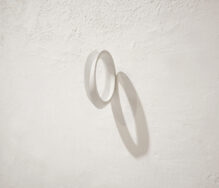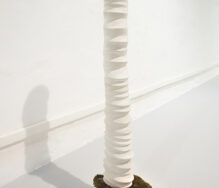The absolute obsolet
– 2022. Individual exhinbition at Can Manyé. Centre d’art i creació. Alella
Sculpture installation and drawings
—
—
We live in a feeling of permanent obsolescence where the stupor with regard to the accelerated present, the uncertainty for the precarious future that we glimpse and the nostalgia about the past that we know to be inoperative are combined. The sculptures and drawings in this exhibition are organized as an installation that deals with the passage of time, the expiration of what we believe to be immovable.
From a certain awareness of obsolescence and in a context accelerated by the latest “algorithmized” version of capitalism, sculptural practice is pushed to redefine what its meaning should be. If, as the canonical American abstract expressionist painter Barnett Newman said, “sculpture is what you stumble upon when you pull back to look at a painting,” then it becomes a place where things happen, what you bump into, as a find or when you are in a state of alertness, and which activates a series of reflections that are supported in their radical physical materiality, in the occupation and activation of the space that the sculptural practice carries out.
Following this reasoning, a series of pieces that work with books as sculptural objects (abandoned books, out-of-date manuals, absent volumes) are displayed on the floor. These groupings suggest that space does not exist: there is only the spacing between beings and between them and objects. Statues (and also books) are, after all, places invented to measure space, give it limits and shapes, mark it with any geometry.
There is, in my opinion, a strong link between the sculpture and the recovered images, which retain, from their underground chambers, an anthropological enigma characteristic of every archaeological object. This motivation is what leads me to an interest in drawing, worked in extensive series and with unstable materials: dust, ash, graphite, ink, iodine or processes such as the action of sunlight or moisture on paper.
The drawing is incorporated as a slow process of revealing images and structures, where the hand, mind and time are the agents and reagents necessary to materialize an absent reality. Absence as a process of abstraction, that process that designates the act of separating, of removing (as often occurs in sculpture when I choose, carve, empty or construct). The form crystallizes, to give the absence a compactness, an intensity of gaze. Thus, it will be “phantomized” as a “supreme residue”, a remnant of humanity, following the beautiful expression used by the surrealist anthropologist Michel Leiris. Of that supreme residue, this absolute obsolete.
My sculptural work assumes the disturbing strangeness of the unheimlich object. It is situated between a problem of the lived and a problem of form: something distant approaches, an aura fascinates and attracts us, but its real meaning, the return of the rejected – then makes us turn away from it . This makes me think of the powerful image of the Benjaminian angel. Brought to the present, it allows us to speculate what current debris would motivate his double movement of looking back and fleeing forward. Perhaps the angel senses that this time human history is being overwhelmed by “natural history”, entropically accelerated by rampant human action.
Marx understood the antagonistic relationship between humans and nature as a specifically modern product that resulted from capitalist industrialization: humans must produce to live and work, as an act of this production, is inevitably conditioned by various natural and material factors . Under these conditions, we modify our environment, and by now, we are irreversibly affecting it to the point of jeopardizing the very conditions of subsistence. The sculptural practice is a work that modulates space and produces spaces with other subjects and objects; however, exercised from its radical obsolescence, it can paradoxically deactivate the accumulation of destructive capital and points “biasedly” to the need to recover the conditions of metabolic balance with nature.
—
Revers. Digital print. 43 x 32 x 2,5 cm. 2022
Mute Volums. Steel and concret. 200 x 120 x 30 cm. 2022
Bibliogeometry. Found books and concret. 500 x 500 cm. 2020-2022
Absolute obsolet. Steel shelve and book. 16,5 x 23,5 x 2,5 cm. 2022
Naturalisms. 30 iodine and indian ink drawings on paper. 76 x 56 cm each one. 2020
Scriptural. Iron, Stones with moss. 50 x 440 x 42 cm. 2022
The neck at the foot. Concret. 40 x 150 x 15 cm. 2021
Sculpture is a hole. Hidrocal and stone with moss. 110 x 34 x 22 cm. Hidrocal and hole. 14 x 9 x 2,8 cm. 2022
